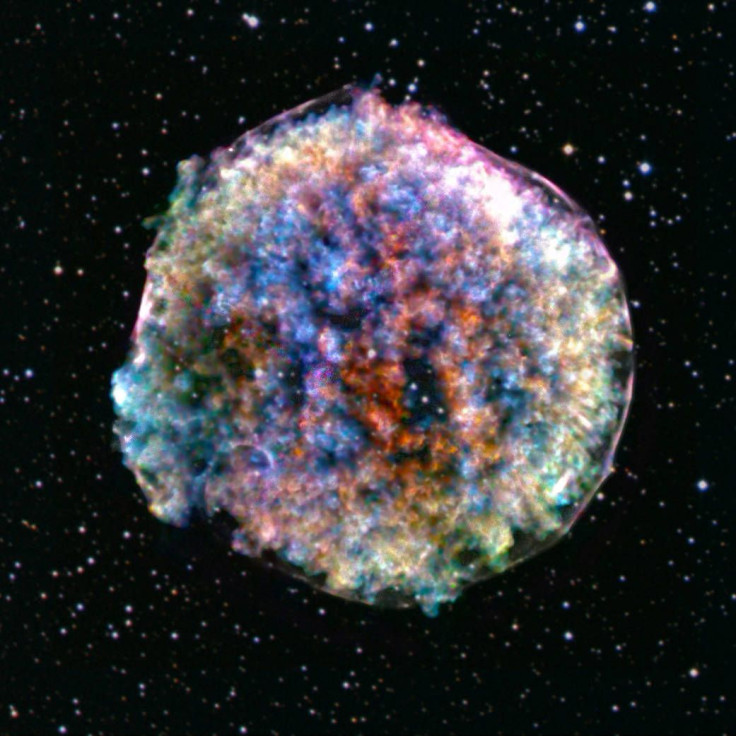NASA Reveals Best Photo From Space: A Colorful 3D Supernova Explosion In Cassiopeia

NASA shared a stunning image of a supernova remnant located in the Cassiopeia constellation. The remnant, known as Tycho Supernova, was captured using the space agency’s Chandra X-ray Observatory.
The Tycho Supernova has been categorized by astronomers as a Type Ia supernova. This means that the explosion was caused by a white dwarf star, which most likely died as it ran out of fuel and collapsed under the weight of its own gravity.
Also known as SN 1572, The Tycho Supernova was first observed by Danish astronomer known as Tycho Brahe in 1572 after he noticed a new bright object within the Cassiopeia constellation.
According to NASA, the explosion left by the white dwarf star left a three-dimensional cosmic object. It is characterized by its unique pattern of debris. Based on the image taken by Chandra, the star’s violent explosion caused clumps of debris to form within the cosmic object.
⭐ ➡️💥 A Chandra supernova in the sky... This @chandraxray image captures a star in the constellation Cassiopeia that was obliterated by an explosion, leaving this three-dimensional object: a supernova remnant. What was revealed in its pattern of debris: https://t.co/hMfq5uTdq9 pic.twitter.com/Uh9cpL50T2
— NASA (@NASA) October 22, 2019
“Chandra reveals an intriguing pattern of bright clumps and fainter areas in Tycho,” NASA said in a statement. “What caused this thicket of knots in the aftermath of this explosion? Did the explosion itself cause this clumpiness, or was it something that happened afterward?”
Through the latest image of the Tycho Supernova, NASA was able to compare it to 3D models of similar supernova remnants. Combined with Chandra’s X-ray imaging properties, NASA was able to view the clumps of debris in different colors.
“This latest image of Tycho from Chandra is providing clues,” the agency explained. “To emphasize the clumps in the image and the three-dimensional nature of Tycho, scientists selected two narrow ranges of X-ray energies to isolate material (silicon, colored red) moving away from Earth, and moving towards us (also silicon, colored blue).”
“The other colors in the image (yellow, green, blue-green, orange and purple) show a broad range of different energies and elements, and a mixture of directions of motion,” NASA added. “In this new composite image, Chandra’s X-ray data have been combined with an optical image of the stars in the same field of view from the Digitized Sky Survey.”
Based on their findings, NASA speculated that the clumps within the supernova may have been caused by multiple explosions following the star’s death.
© Copyright IBTimes 2024. All rights reserved.





















